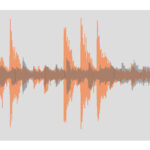It’s taken decades to come around, but there’s a certain ironic enjoyment to be found in St. Elmo’s Fire, especially when considering its iconic theme song. Back in 1985, the film felt like a betrayal, especially after the insightful teen angst of The Breakfast Club. Joel Schumacher’s movie, set against the backdrop of Georgetown, boasted a stellar Brat Pack cast, a sophisticated soundtrack by David Foster, and a hit song that, in retrospect, seems utterly disconnected from the on-screen drama.
Expecting a rebellious sequel to John Hughes’s work, the trailer promised a movie that would speak to a generation. Instead, St. Elmo’s Fire presented a group of recent college graduates, already disillusioned and grappling with “thirtysomething” issues. The youthful rebellion seemed to evaporate instantly, replaced by anxieties of conformity and adulthood. This disconnect extends directly to the film’s title track, “St. Elmo’s Fire (Man in Motion)” by John Parr.
One of the most jarring aspects of St. Elmo’s Fire is how the very song meant to encapsulate its spirit feels completely out of sync. The lyrics, revolving around a ‘man in motion’ and needing ‘a pair of wheels,’ clearly belong to a different narrative – one of overcoming physical challenges, not the shallow dramas of privileged Georgetown graduates. The song, powerful and anthemic in its own right, feels awkwardly grafted onto a movie where the characters’ biggest struggles involve infidelity, stalking, and coke-fueled existential crises. Even within the movie itself, the irony is amplified: patrons at the bar named St. Elmo’s Fire barely register when “St. Elmo’s Fire” the song plays.
The song’s true origin further highlights this incongruity. “St. Elmo’s Fire (Man in Motion)” was originally written for Rick Hansen’s “Man in Motion” world tour, a fundraiser for spinal cord research. The powerful imagery of overcoming obstacles and striving forward is undeniably present in Parr’s performance. However, in the context of St. Elmo’s Fire the movie, this powerful message is diluted, serving as a glossy soundtrack element for characters whose ‘motion’ is largely aimless and self-absorbed.
In the 2020s, viewing St. Elmo’s Fire becomes a different experience. The self-absorbed nature of the characters, once grating, now plays as a time capsule of 80s excess and superficiality. And the song, “St. Elmo’s Fire,” instead of being the emotional core the filmmakers intended, becomes another layer of this delicious 80s absurdity. It’s a catchy tune, undeniably, but its misapplication in the movie underscores the film’s overall tone-deafness. This ironic appreciation allows for a new kind of enjoyment, one where the disconnect between the powerful “St. Elmo’s Fire song” and the shallow movie it soundtracks becomes the very source of its entertainment value.

